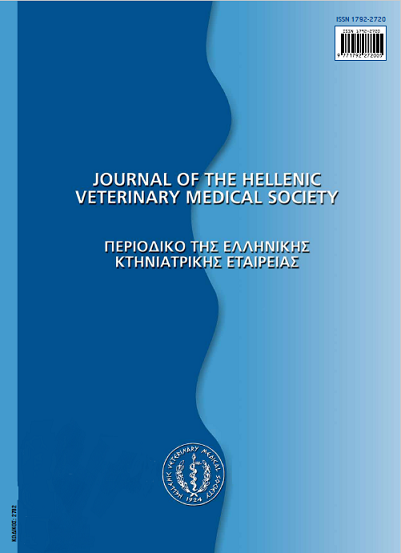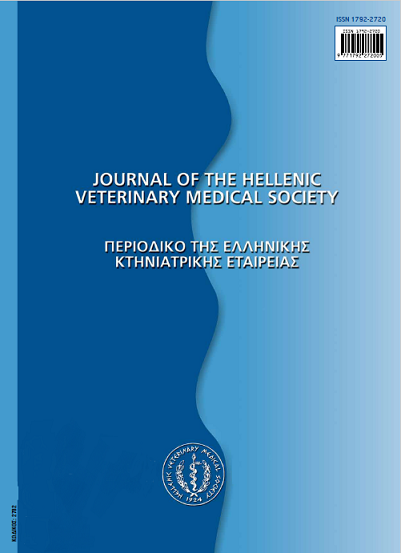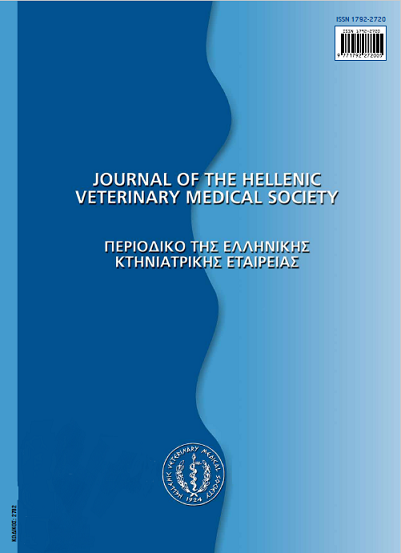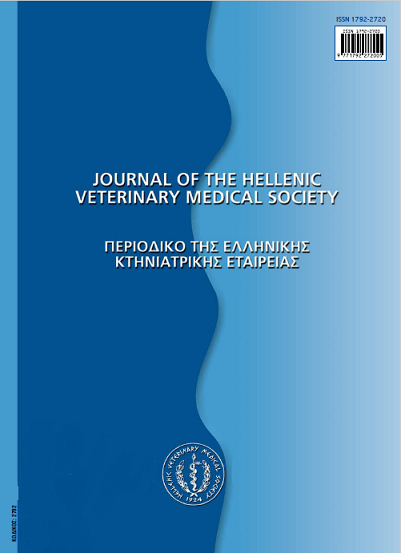Η χρήση φορητής συσκευής για τη μέτρηση της συγκέντρωσης της γλυκόζης στο αίμα στο σκύλο και τη γάτα

Περίληψη
Οι φορητές συσκευές για τη μέτρηση της συγκέντρωσης της γλυκόζης στο αίμα (γλυκοζόμετρα) είναι ηλεκτρονικές συσκευές που προσδιορίζουν τη συγκέντρωση της γλυκόζης στο ολικό αίμα. Χάρη στην εξέλιξη της τεχνολογίας, ο προσδιορισμός αυτός πραγματοποιείται σε μικρό όγκο αίματος και αποτελεί απλή γρήγορη και χαμηλού κόστους διαδικασία. Τα γλυκοζόμετρα χρησιμοποιούνται συχνά στην ιατρική των ζώων συντροφιάς, ιδιαίτερα για τη διάγνωση και την παρακολούθηση της θεραπείας σκύλων και γατών με σακχαρώδη διαβήτη ή υπογλυκαιμία. Τα αποτελέσματα της μέτρησης της συγκέντρωσης της γλυκόζης με τα γλυκοζόμετρα επηρεάζονται από διάφορους παράγοντες, όπως: α) η ίδια
η συσκευή, αφού το αποτέλεσμα ενδέχεται να διαφέρει μεταξύ γλυκοζόμετρων από διαφορετικούς κατασκευαστές, καθώς και τα αναλώσιμα (ταινίες) που τη συνοδεύουν και οι συνθήκες αποθήκευσης τους, β) οι περιβαλλοντικές συνθήκες, όπως είναι η θερμοκρασία και ενδεχομένως το υψόμετρο, γ) η τεχνική συλλογής του δείγματος (σημείο αιμοληψίας, καθαριότητα του σημείου αιμοληψίας, συλλογή του δείγματος σε φιαλίδιο με αντιπηκτικό), δ) το ίδιο το ζώο, αφού το αποτέλεσμα επηρεάζεται από τον αιματοκρίτη, τη συγκέντρωση των τριγλυκεριδίων, της κρεατινίνης, του ουρικού οξέος και των πρωτεϊνών στο αίμα και τη χορήγηση ορισμένων φαρμάκων, και ε) τα σφάλματα ανάλυσης. Λόγω της επίδρασης των παραγόντων αυτών, το αποτέλεσμα της μέτρησης ενδέχεται να διαφέρει σημαντικά όταν αυτή προσδιορίζεται με γλυκοζόμετρο σε σύγκριση με τους βιοχημικούς αναλυτές, γεγονός που πρέπει να λαμβάνεται υπόψη, ιδιαίτερα όταν δε χρησιμοποιείται
η ίδια μέθοδος προσδιορισμού σε διαδοχικές μετρήσεις στο ίδιο ζώο.
Επιπλέον, λόγω των διαφορών του αποτελέσματος μεταξύ συσκευών από διαφορετικούς κατασκευαστές, πρέπει να χρησιμοποιείται πάντα το ίδιο γλυκοζόμετρο και οι μετρήσεις να γίνονται κάτω από τις ίδιες περιβαλλοντικές συνθήκες και με την ίδια τεχνική αιμοληψίας προκειμένου να είναι συγκρίσιμα τα αποτελέσματα. Οι παραπάνω παράγοντες που επηρεάζουν τη συγκέντρωση της γλυκόζης στο αίμ όταν αυτή προσδιορίζεται με τη βοήθεια του γλυκοζόμετρου πρέπει να λαμβάνονται υπόψη και, όπως άλλωστε ισχύει για κάθε εργαστηριακή εξέταση, το αποτέλεσμα πρέπει να συνεκτιμάται με τα κλινικά και τα υπόλοιπα εργαστηριακά ευρήματα για τη λήψη των καλύτερων διαγνωστικών και θεραπευτικών αποφάσεων.
Λεπτομέρειες άρθρου
- Πώς να δημιουργήσετε Αναφορές
-
ATHANASIOU (Λ.Β. ΑΘΑΝΑΣΙΟΥ) L. V., TSOKANA (ΤΣΟΚΑΝΑ Κ.Ν.) C. N., & SARIDOMICHELAKIS (Μ. ΣΑΡΙΔΟΜΙΧΕΛΑΚΗΣ) M. N. (2017). Η χρήση φορητής συσκευής για τη μέτρηση της συγκέντρωσης της γλυκόζης στο αίμα στο σκύλο και τη γάτα. Περιοδικό της Ελληνικής Κτηνιατρικής Εταιρείας, 65(4), 273–288. https://doi.org/10.12681/jhvms.15576
- Τεύχος
- Τόμ. 65 Αρ. 4 (2014)
- Ενότητα
- Review Articles
Οι συγγραφείς των άρθρων που δημοσιεύονται στο περιοδικό διατηρούν τα δικαιώματα πνευματικής ιδιοκτησίας επί των άρθρων τους, δίνοντας στο περιοδικό το δικαίωμα της πρώτης δημοσίευσης.
Άρθρα που δημοσιεύονται στο περιοδικό διατίθενται με άδεια Creative Commons 4.0 Non Commercial και σύμφωνα με την άδεια μπορούν να χρησιμοποιούνται ελεύθερα, με αναφορά στο/στη συγγραφέα και στην πρώτη δημοσίευση για μη κερδοσκοπικούς σκοπούς.
Οι συγγραφείς μπορούν να καταθέσουν το άρθρο σε ιδρυματικό ή άλλο αποθετήριο ή/και να το δημοσιεύσουν σε άλλη έκδοση, με υποχρεωτική την αναφορά πρώτης δημοσίευσης στο J Hellenic Vet Med Soc
Οι συγγραφείς ενθαρρύνονται να καταθέσουν σε αποθετήριο ή να δημοσιεύσουν την εργασία τους στο διαδίκτυο πριν ή κατά τη διαδικασία υποβολής και αξιολόγησής της.







